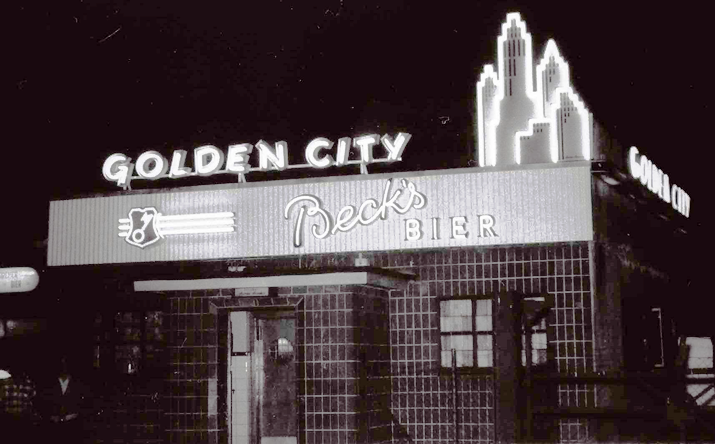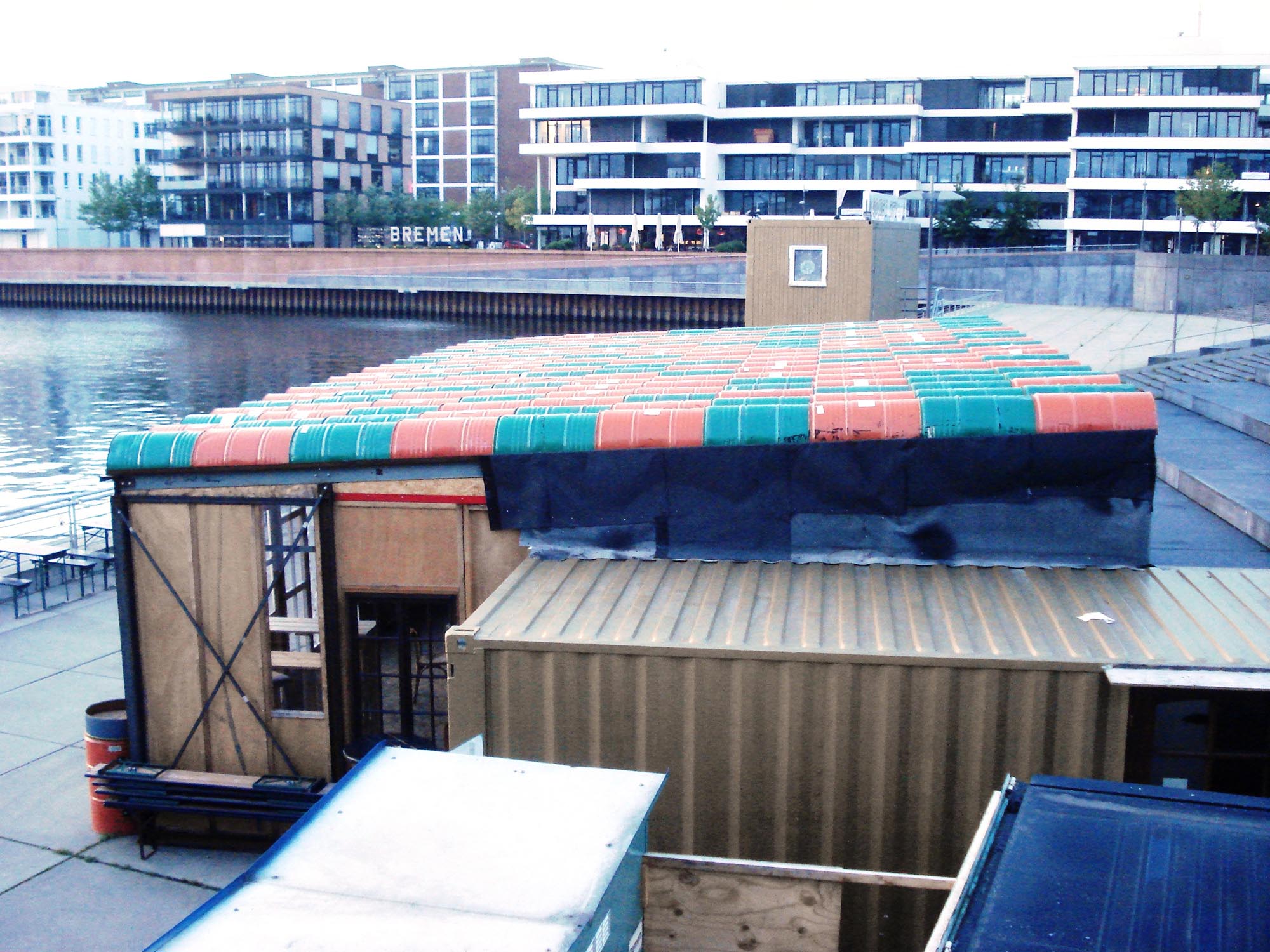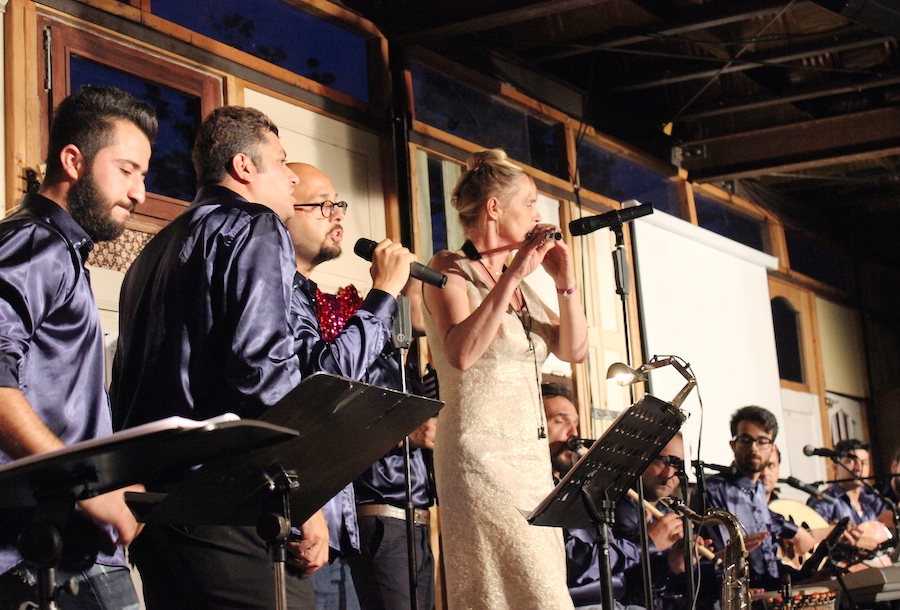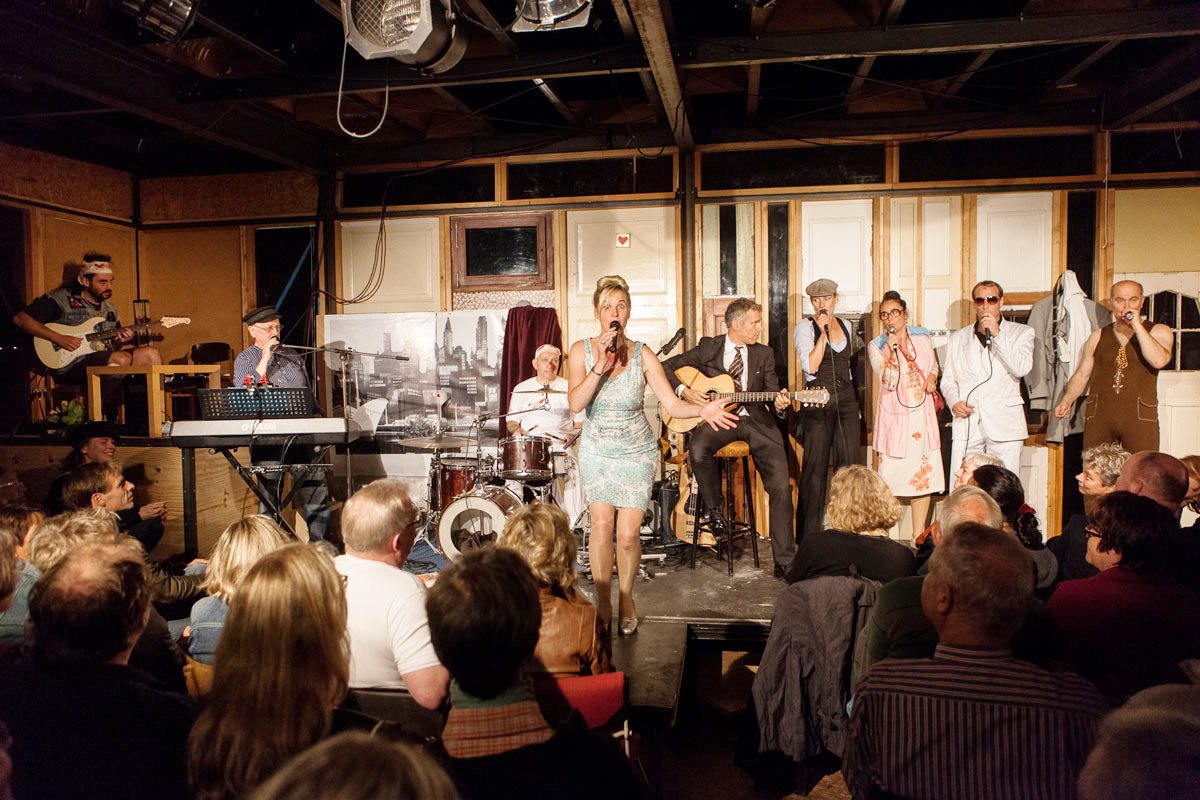When thinking about maritime heritage, it is often about those obvious symbols, artefacts and behaviours we can perceive directly on the surface: The specialised architecture of sheds and storehouses, the nostalgic silhouettes of ships and cranes, folkloristic festivities etc. But, moreover heritage is always an expression of collectively shared meanings, expectations, norms and values characterising the particular culture of a certain locality or community. In the case of maritime heritage it is closely related to the port citys’ specialised functions, economic and social structures.
Maritime Heritage and the Harbour Tavern
The particular maritime character of culture is therefore the basis and the expression of a particular collective identification and determines thinking, understanding, communicating and decision making. Both, the ensemble of tangible symbols and artefacts as well as the intangible framework of shared conventions, attitudes and expectations and its underlying values are changeable in time, sometimes adapt to new dynamics and switch to new forms and/or meanings.
This is, what took place in most of the Western port cities since the 1980s. After the depression of industrial decline and more or less complete loss of maritime industries, port cities had to reinvent themselves. Many development projects represented those processes of modernisation, reflecting the changes of maritime local culture. Huge projects like Darling Harbour in Sydney, the London or Dublin Docklands, the Port Vell in Barcelona or the Porto Antico in Genoa, the Overseas-City in Bremen or the Hafen-City in Hamburg convey a new sense of place where the citys’ former economic base was located and its identity was coined. Waterfront development meant to establish a new economic base in these places, adapted to the globalised information and knowledge society and symbolising revitalisation, modernity and future orientation. But, a typical quality of experience and ambience is given to the emerging mix of marinas, office buildings, lofts and high quality housing estates, shopping malls, multiplex-cinemas, food-courts, congress-centres, museums, aquariums etc. only through the reuse of typical maritime symbols, buildings, landmarks. Finally, not even Bilbao, where the ‘Guggenheim-Effect’ is seen as an impulse for a radical change in local development and as starting point for a completely new city identity, does without a local maritime museum, which, with its silhouette of old shipyard facilities, is integrated into the new inner urban development axis along the river Nervion.
However, in contrast to the preservation of tangible heritage it is extremely challenging to identify the typical intangible characteristics of a certain (port)city and to differ powerful collective identity as an efficient resource for redevelopment from folkloristic fuss and nostalgic legends. And it is even more challenging to reveal the changes of local culture and its functions in times of deep transformation. One of the best known indicators for the character of the port city is and was throughout history the typical social institution of the sailors‘ inn. From the antique world to a future far away (see the representation of the “Mos Eisley Cantina” at the space port of the planet Tattoine in the Star Wars Saga) the typical harbour tavern is seen as a multifunctional meeting place, which stands for encounter and diversity, for exchange of contacts, information and ideas or for – sometimes obscure – businesses. The stereotype of the sailors’ inn, as we know it since centuries and as a place where „it all comes together“ and where everything is mixed up, displays perfectly all the elements and clichés which are attributed to the port city as a whole.
But, the harbour tavern as well as the entire red-light district in port cities has more and more become a romantic imagination. In our days, for example the notorious red-light district of St. Pauli in Hamburg has developed into a well-known location for entertainment and cultural attractions for all kinds of visitors and tourists and for every social milieu. And it is still using the traditional infamous image as a branding asset. So, the sailors’ inn as a social institution and an element of local culture is not really related to the port anymore, but it is still a symbol for the special character of the port city. Against this background is the story of the “Golden City Bar” in the Free Hanseatic City of Bremen an outstanding example for the paradox simultaneity of celebrating the heritage and giving it a new, contemporary function, meaning and significance.
The Golden City Entertainment, Research and Discourse Project
During the 1950s and 1960s the City of Bremen faced the last boom in the traditional maritime economy. Besides all other sectors of the local economy also the port related red-light district flourished. Night by night, sailormen, dockworkers, whores, smugglers, exempt soldiers and many others seeked for amusement or attended their business in those bars, which were concentrated in the area. The “Golden City Bar” was one of these taverns.
The former Golden City Bar in the 1960s. (http://www.goldencity-bremen.de/3411a3e703fc04bbe9a13f5d938a8fff.jpg).
With the decline of port and maritime industries, the removal of port facilities from inner city areas and changes in sea transport technologies the “Golden City Bar” together with the entire cluster of bars, whorehouses and entertainment decayed and finally disappeared in Bremen like in many other port cities.
When some artists started around 2002 to study the history of the Bremen red-light district, they initially created music-, theatre- and cabaret-productions on the history of the place and the people, who lived and worked here. The concept succeeded and was enlarged year by year. Finally, since 2013 it flew into a cultural crossover project called “Golden City”. “Golden City” was a temporary harbour tavern assembled from old construction components, containers and barrels, located at the head of the Europahafen, one of the inner city docks which were neglected since the 1990s. The provisional character of the Golden City was intentionally realised in contrast to the post-industrial facades and structures of the surrounding waterfront developments. A motley programme was composed of music and singing events for everyone and professionals, critical discussions about urban planning and urban development, theatre and show events as well as historic reflections. Until 2017 the “Golden City” was opened at this place during the summer months and since 2018 it moved to the other side of the River Weser into a former popular restaurant at the edge of a still working port. With this relocation the “Golden City” exchanged a favourable inner city location for a place with still perceptible real port atmosphere.
The new Golden City Bar 2013-2017. (© Günter Warsewa 2015).
From the beginning the Golden City project intended to connect the somehow peculiar and “deviant” character of the former harbour tavern with contemporary developments of urban and social structures. Popular events and activities reflected particularly the following aspects of local culture.
The constant presence of changing groups of foreigners was a normal feature of the port city, influencing urban life and the attitudes of residents. The capacity for cultural exchange and profitable dealings with foreigners and their culture were vital ingredients to securing economic success – not at least for all kinds of businesses attended in the red light district. The local culture of the port city has traditionally been a ‘globalised’ culture for centuries and it includes a widespread familiarity with the change of roles and perspectives. Therefore it is a typical feature of the local culture of port cities to facilitate the integration of immigrants and foreigners and to enable them to contribute to the local culture. This historical experience was the initial point for a collaborative project together with a harbour bar in Elefsina, Greece in 2017. Connected via internet life productions with music, theatre and talk shows gave an impression of local life conditions and culture to the public. Regarding the inflow of refugees Golden City set up another project with musicians from different countries, who had come to Bremen and lived in refugee camps. Reflecting their experiences Golden City performed an entertaining revue about the particular situation of refugees in Bremen.
Show event with refugee musicians at the Golden City Bar. (http://www.lovebremen.de/wordpress/wp-content/uploads/2016/08/LOVEBREMEN-Blog-Magazin-Golden-City-Sehnsuchtslieder-03.jpg)
In every port city we can find the inevitable port or maritime museum, historic workshops, maritime heritage trails, shipyards open to the public, etc. continuing old traditions, for example by maintaining working techniques and crafts. Many of these installations and institutions are limited to the mere technical aspects or practice the glorification of “good old times”. A more realistic view on living and working conditions in the port and in the related city districts is combined with amusement and entertainment in Golden City projects like “Coffee, Cake and Coast” or “Singing Without Notes”. Contemporary witnesses report on their experiences in the former Golden City Bar as well as in the companies of the former maritime industry – always accompanied by singing and chanting together with the audience. The typical Golden City sound and life events convey a combination of ironic distance and real respect and appreciation for services and attainments once rendered.
A certain spirit of liberty and self-confidence is often attributed to the port city and its residents. This spirit is sometimes conflicting with the contemporary dynamics of globalised culture and post-fordist patterns of place-making and image-building. So, experimenting with innovative artificial formats in former port locations the Golden City project understands itself not at least as a contribution to public debates and urban development. Occupying and redefining traditional places, old symbols and their meanings provokes disputes about conventional attitudes related to the history of the place, which in other social groups or milieus are unquestioned. Provocative interventions initiate new discourses about the re-use of local culture and maritime heritage for new forms of consumption and life styles, for tourism and economic purposes. Golden City’s’ own theatre productions like “Sellout” (2015) or “And What About The Relics?” (2014) ask for the contemporary functions of local culture and maritime heritage and take it as background for public debates with politicians, urban planners and real estate managers. Hence, the Golden City Bar in Bremen is not only a place for maritime entertainment, but also organises critical discussion on urban development, waterfront regeneration and gentrification.
Singing at the Golden City Bar. (http://www.goldencity-bremen.de/images/projekte/theater-2013.jpg)
The sailors’ inn as a symbol for the individuality of the port city
The rediscovery, restoration, redefinition and re-exploitation of both, tangible and intangible forms and expressions of local culture and maritime heritage is more than ever in danger to become a mere attachment of urban structures. But, the renewal of the port city does not in any way follow a purely adaptive logic, which makes the impact of global dynamics the crucial determining factor in local development. Instead, there are many examples which demonstrate that the development of port cities is still an expression of a certain autonomy and individuality. Artist projects like the Golden City Bar contribute to the vital reproduction of the typical character and local culture of the port city.
For more information see: http://www.goldencity-bremen.de/
Head Image: The new Golden City Bar 2013-2017. (© Günter Warsewa 2015).



